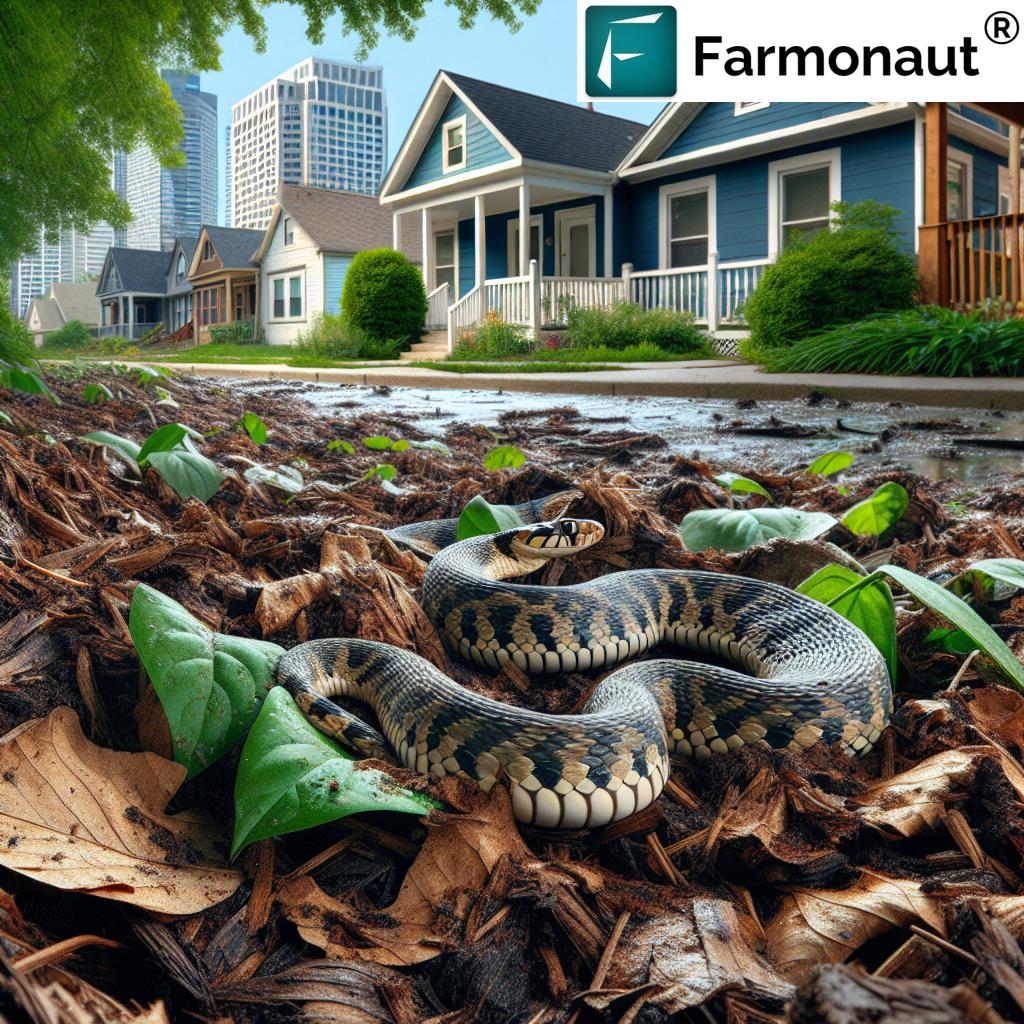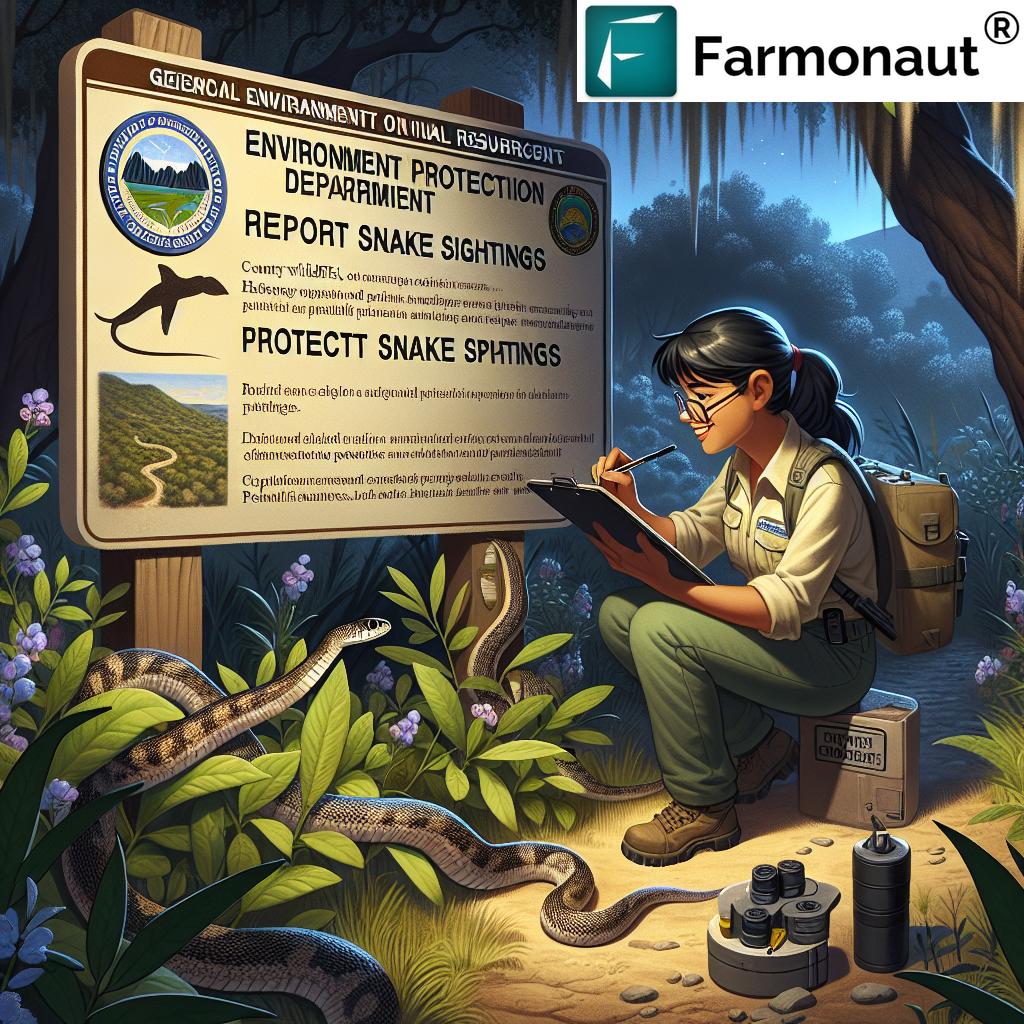Kirtland’s Snake Indiana: 7 Ways Residents Can Help Conservation
“Kirtland’s snake populations in Indiana have declined by over 90% since the 1900s due to habitat loss.”
Introduction
Kirtland’s snake (Clonophis kirtlandii) is one of Indiana’s rarest and most fascinating reptiles. Once more common, this small, gentle, and secretive Indiana native snake is now state-endangered and at risk of disappearing altogether. The Indiana Department of Natural Resources (DNR) is currently spearheading snake conservation efforts by gathering distribution and population information across Indiana. However, the future of Kirtland’s snake Indiana does not rest solely in the hands of biologists—the active involvement of local residents is essential.
In this comprehensive guide, we will explore how each of us, as members of the public, can help protect this unique species: learning to identify Kirtland’s snake, reporting sightings, protecting habitats, and supporting sustainable practices. We’ll also spotlight valuable environmental tools like Farmonaut, which empower conservation through innovative, satellite-driven insights. Together, our contribution can help restore hope for this remarkable snake and for Indiana’s biodiversity as a whole.
About Kirtland’s Snake in Indiana
The Kirtland’s snake Indiana is a vital part of our natural heritage, yet it’s practically unknown even among lifelong residents. As one of the Indiana endangered reptiles, it plays a crucial role in balancing ecosystems and serves as an important indicator of wetland and grassland health. Despite being harmless to people and pets, negative attitudes and misinformation about snakes, combined with habitat destruction, continue to threaten the persistence of this species.
- Family: Natricidae (Water Snakes and Allies)
- Scientific Name: Clonophis kirtlandii
- Status in Indiana: State Endangered; protected by law
- Key Features: Small size, brick-red/brown color, distinctive dark blotches, and unique pink belly lined with dark spots
- Behavior: Docile, non-venomous, shy, rarely bites if handled (but handling is prohibited for the public!)
- Semi-fossorial: Spends much of its life underground or under cover, making it difficult to detect
Despite being difficult to spot, their presence is more common along moist soils in grassy, open areas and occasionally even in urban wildlife in Indiana—vacant lots, ditches, residential areas, and wherever suitable shelter and seasonal flooding are present.
Why Conservation for Kirtland’s Snake Indiana Matters
Our local efforts to protect the Kirtland’s snake are not just about saving a single species. They also preserve the complex web of life within Indiana’s wetlands, grasslands, and urban green spaces. Protecting this snake means safeguarding clean water, healthy soils, and resilient natural resources for the future.
Moreover, public engagement in conservation actions—such as reporting sightings, protecting habitats, and practicing sustainable land management—has a cascading impact. Not only does this help DNR researchers in gathering critical population and distribution data, but it also fosters a growing sense of stewardship and appreciation for Indiana’s unique wildlife.
How to Identify Kirtland’s Snake (Focus Keyword)
Effectively supporting conservation efforts starts with knowing how to identify Kirtland’s snake. Confusing this protected snake species Indiana with more common, less vulnerable snakes is easy, so accurate identification is crucial for both public safety and ecological monitoring.
Key Visual Features:
- Size: Small, typically 12–18 inches (30–46 cm) long
- Body Color: Brown to brick-red background, with two alternating rows of large dark brown or blackish blotches running along the back
- Belly: PINK (sometimes reddish), with rows of small black dots along both sides—this is the most reliable distinguishing trait!
- Neck: Sometimes features a faint light-colored ring or collar
- Head: Slightly wider than the neck, smooth scales, rarely shows defensive behavior (will not harm humans)
If you see a snake matching this description, particularly in moist soil environments or under objects in grassy, open, or urban residential areas, there’s a strong chance it’s a Kirtland’s snake Indiana.
“Only 7 counties in Indiana currently report confirmed sightings of the endangered Kirtland’s snake.”
Snake Habitats in Indiana: Where Kirtland’s Snake Lives
Knowing snake habitats in Indiana is essential to boosting public reporting wildlife and directing conservation action to where it’s needed most. Kirtland’s snake occupies a variety of environments, from traditional wetlands to surprising urban and suburban niches.
Preferred Habitats
- Open grassy fields with moist soil: Frequently near seasonally flooded locations
- Wet meadows and lowland prairies
- Edges of marshes, streams, or drainage ditches: Especially those with periodic flooding
- Urban/rural vacant lots, landscaping in parks, garden edges
- Under rocks, metal, wood, old boards, or landscape stones: These objects provide shelter, mimic natural cover
- Crayfish burrows or natural animal burrows: Snakes may co-opt crayfish tunnels in soft, loose soils
This remarkable adaptability means you might encounter Kirtland’s snake in a city park as easily as a remote wetland, underscoring the importance of protecting both traditional and non-traditional habitats in our counties.
Main Threats and Conservation Needs
The distribution of Kirtland’s snake has contracted dramatically over the past century. The most immediate threats involve both direct and indirect loss or degradation of suitable habitat:
- Habitat Loss: Conversion of wetlands and grasslands to agriculture, urban and industrial use
- Urbanization: Habitat fragmentation, loss of vacant lots to development, landscaping that removes cover or ditches
- Water Pollution: Stormwater runoff, pesticides, herbicides, chemical spills degrade wetlands and soil health
- Crayfish Decline: Fewer crayfish burrows reduce available shelter for these semi-fossorial snakes
- Misinformation and Negative Perception: Many Indiana snakes are harmless but killed from fear or mistaken identity
- Climate Change Impacts: Reduced suitable flooding, altered seasonal cycles, disruption of soil hydrology
Overcoming these challenges starts with gathering reliable information through public assistance. This is critical for guiding researchers to hotspots, refining our understanding of population status, and prioritizing conservation action across Indiana.
7 Ways Indiana Residents Can Help Conservation
We all have a role in Indiana’s biodiversity story. Here’s how residents across counties can make a powerful contribution to Kirtland’s snake Indiana conservation—no matter where we live or what our background:
-
1. Submit Snake Sightings Indiana
The most crucial public action is to provide the DNR with accurate information on the distribution of this elusive species:
- Photograph any possible Kirtland’s snake—do NOT handle the snake; use your phone/camera to zoom in safely.
- Record the location as precisely as possible (GPS coordinates or a clear map pin are ideal, but at least street or county name).
- Note the date, habitat type (e.g., under wood in vacant lots, along landscaping in residential areas), and general conditions (sunny, rainy, etc.).
- Email the photo and details to the Indiana DNR (Department of Natural Resources) as soon as possible. Visit their website for the latest submission address and form.
- Why it matters: Kirtland’s snakes are masters of hiding; public reporting wildlife sightings is the only way researchers can monitor population status across the state effectively.
-
2. Protect Snake Habitats in Indiana (Vacant Lots, Urban & Rural Areas)
Support or advocate for preservation of open, grassy spaces with moist soil—these are vital not just for Kirtland’s snakes but many native creatures.
- Leave undisturbed areas: Avoid mowing, removing rocks/stones, or landscaping over “wild” corners, especially in seasonal flooding zones.
- Promote green corridors and vacant lot conversions to pocket wetlands or native meadows, especially in urban counties.
- If you manage public areas, collaborate with conservation groups to enhance habitat suitability for Indiana native snakes.
-
3. Respect and Do Not Handle Protected Snake Species Indiana
Always observe but never handle any snake, especially endangered species. Handling can cause injury to both the snake and the observer, and it’s illegal for protected snakes under state law.
- If a snake is found in a risky location (e.g., road, yard under threat), gently guide others away and let it leave on its own.
- Educate neighbors and children about Indiana native snakes and their crucial ecological role.
-
4. Reduce Chemical Use Near Wetlands or Vacant Lots
Chemicals used in landscaping, gardens, or public areas can contaminate soil/ditches and harm both snakes and their prey (like crayfish).
- Choose organic or low-impact alternatives; reduce fertilizer and pesticide use wherever possible.
- Support local and county ordinances that protect waterways, especially in high-priority habitat zones.
-
5. Volunteer or Support Conservation Surveys
Several local groups and academic researchers in Indiana regularly conduct field surveys and habitat improvements.
- Sign up with DNR, local nature centers, or wildlife groups to assist biologists in habitat assessment or urban wildlife surveys.
- Spread information about ongoing projects within your community or social circles.
-
6. Promote Sustainable Land and Water Management in Your County
Advocate for and implement water-wise gardening, wetland restoration, and sustainable use of public resources.
- Join initiatives to restore wetlands and reintroduce native plants that support moist soil environments.
- Leverage technologies like Farmonaut’s carbon footprinting tools (Carbon Footprinting), which help reduce overall environmental impact, benefiting wildlife across Indiana.
- Adopt resource management platforms, including large-scale farm management tools (Agro-Admin App), to optimize land use for both people and wildlife.
-
7. Share Knowledge and Advocate for Indiana Endangered Reptiles
The more our friends, family, and local organizations understand the true value of Kirtland’s snake Indiana, the more successful our collective conservation efforts become.
- Host a community event, school presentation, or social media campaign about how to identify Kirtland’s snake and local conservation successes.
- Recommend using blockchain-based traceability tools (Product Traceability) to ensure transparency in local food, plant, and landscaping supply chains, supporting sustainability and habitat conservation.
Conservation Action Impact Table
The table below summarizes each recommended action, the estimated level of involvement, expected conservation benefit, and helpful organizations or resources for further engagement:
| Conservation Action | Estimated Effort | Estimated Impact | Recommended Organizations/Resources |
|---|---|---|---|
| Submit Snake Sightings Indiana | Low | High | Indiana DNR Wildlife Reporting Portal, County extension offices |
| Protect Snake Habitats (Vacant Lots, Urban, Rural) | Medium | High | Local land trusts, Nature preserves, DNR Landowner Assistance |
| Respect/Do Not Handle Protected Species | Low | Moderate | DNR, Indiana Department of Education |
| Reduce Chemicals Near Habitat | Medium | High | Farmonaut Carbon Footprinting, Local watershed alliances |
| Volunteer for Surveys & Habitat Work | Medium-High | High | DNR Volunteer Programs, County parks, Local NGOs |
| Promote Sustainable Resource Management | Medium | High | Farmonaut Agro-Admin App, County environmental councils |
| Share Knowledge & Advocate for Indiana Endangered Reptiles | Low | Moderate | Local schools, Community centers, Farmonaut Product Traceability |
Farmonaut Technologies: Supporting Biodiversity & Sustainability
As we work to protect rare species like the Kirtland’s snake Indiana, leveraging cutting-edge tools can make community conservation effort more impactful. While Farmonaut’s solutions are designed primarily for the agricultural sector, their features directly or indirectly benefit wildlife and habitat conservation statewide:
- Satellite-Based Crop & Soil Health Monitoring: Farmonaut enables users to monitor soil moisture, vegetation health, flooding, and land use changes—critical for locating and supporting snake habitats in Indiana.
- Carbon Footprinting: Farmonaut’s carbon footprinting platform helps farms and landowners track and reduce environmental impact. Land managed for lower emission also supports better wetland and grassland conditions, improving Kirtland’s snake habitat quality.
- AI-Based Advisory Systems: Jeevn AI delivers real-time, location-specific management recommendations for optimizing land use and supporting sustainability.
- Blockchain-Based Traceability: Traceability solutions increase transparency in food and resource chains, incentivizing sustainable land use and ethical, conservation-friendly procurement.
- Large-Scale Farm Management: Agro-Admin App empowers organizations to streamline landscape management, optimize resources, and create synergy between agriculture and conservation goals.
- API Developer Access: Bring custom conservation analytics or public sighting tools to your county or project using Farmonaut’s API and Developer Docs.
By integrating services like Farmonaut, residents and stakeholder groups across Indiana can ensure their contribution to conservation includes the latest, science-based support—delivering both productivity and sustainability.
Explore Farmonaut Subscription Options
Empower your farm, organization, or community project with satellite-based monitoring, sustainability tools, and support. Flexible subscriptions are available for every scale—from backyard habitats to entire counties.
Frequently Asked Questions (FAQ)
What should I do if I see a snake I think matches Kirtland’s snake Indiana?
Immediately take a clear photo from a safe distance; do not handle or disturb the snake. Record exact location information (address, county, GPS coordinates if possible), the date found, and environmental details. Submit this information to the Indiana Department of Natural Resources (DNR). Your report will help researchers monitor the distribution and status of this Indiana endangered reptile.
Is Kirtland’s snake dangerous to people or pets?
No. Kirtland’s snake is harmless, non-venomous, and extremely docile. There is no threat to humans, domestic animals, or children.
Can I move a Kirtland’s snake if I find it in danger?
No, state regulations protect this snake. The public must not handle or move the snake; instead, clear the area, prevent harm, and alert others. Reporting sightings and educating people is the best action.
Why is public reporting of wildlife so important?
Most Kirtland’s snakes are found by residents—not professional biologists. Accurate public data helps researchers understand population trends, prioritize conservation needs, and direct resources for the greatest effect. Your involvement is vital!
Are there any modern tools to improve conservation practices?
Yes. Apps, satellite data services, and management tools like Farmonaut (Web, Android, and iOS) can enhance monitoring, reporting, and sustainable land management at every scale—from single lots to large agricultural landscapes.
How can I support conservation if I don’t own land or visit nature often?
Share information, volunteer in surveys, promote sustainable choices in your city or county, and advocate for the protection of vacant lots, ditches, and green spaces in urban and residential neighborhoods.
Additional Resources & Get Involved
Stay engaged and make an ongoing impact by connecting with these organizations and resources:
- Indiana DNR (Department of Natural Resources): Wildlife Division
- County Extension Services: Local offices provide guides, support, and sometimes host conservation workshops.
- Public Sighting Submission: Check the DNR website for up-to-date forms and contact information to submit snake sightings Indiana.
- Farmonaut Solutions: Learn about carbon footprinting, traceability, and resource management platforms to boost your conservation efforts. Developers and conservation groups can utilize the API and API Docs for custom solutions.
- Nature Centers & NGOs: Join local volunteer projects, attend workshops, or donate to support Kirtland’s snake conservation.
- State Legislative Information: Advocate for policies that protect wetlands, native grasslands, and responsible chemical use in your county.
Ready to apply technology to the landscape? Download the Farmonaut app for actionable insights into environmental and agricultural monitoring:
Conclusion: Our Contribution Makes a Difference
Kirtland’s snake Indiana is a flagship species for the health of our wetlands, grasslands, and even urban green spaces. Its survival depends upon everyone—from biologists and agencies to ordinary residents—coming together to gather information, submit sightings, protect habitats, and shift mindsets about the value of Indiana native snakes and their role in our environment.
By recognizing our interconnectedness with wildlife and leveraging technology—like the advanced monitoring and management platforms offered by Farmonaut—we can build a more sustainable future for both people and the biodiversity that makes Indiana unique. Every photo submission, every protected patch of ground, and every conversation we spark about snake conservation efforts is a vital thread in a much larger tapestry of conservation impact.
Let us continue our role as stewards of Indiana’s natural resources, ensuring Kirtland’s snake and many other unique species remain a part of our living landscape for generations to come.


















